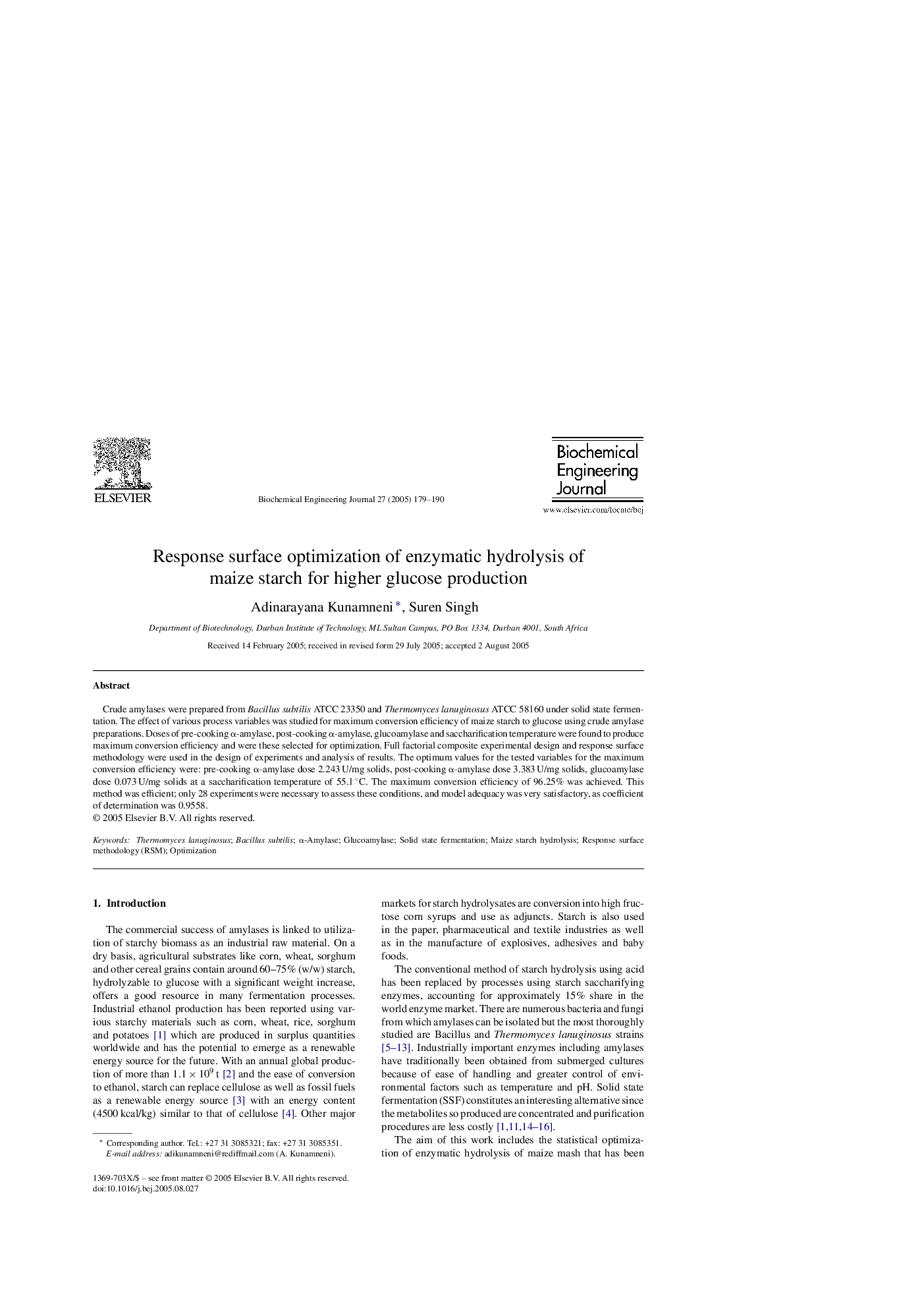| Article ID | Journal | Published Year | Pages | File Type |
|---|---|---|---|---|
| 10160881 | Biochemical Engineering Journal | 2005 | 12 Pages |
Abstract
Crude amylases were prepared from Bacillus subtilis ATCC 23350 and Thermomyces lanuginosus ATCC 58160 under solid state fermentation. The effect of various process variables was studied for maximum conversion efficiency of maize starch to glucose using crude amylase preparations. Doses of pre-cooking α-amylase, post-cooking α-amylase, glucoamylase and saccharification temperature were found to produce maximum conversion efficiency and were these selected for optimization. Full factorial composite experimental design and response surface methodology were used in the design of experiments and analysis of results. The optimum values for the tested variables for the maximum conversion efficiency were: pre-cooking α-amylase dose 2.243 U/mg solids, post-cooking α-amylase dose 3.383 U/mg solids, glucoamylase dose 0.073 U/mg solids at a saccharification temperature of 55.1 °C. The maximum conversion efficiency of 96.25% was achieved. This method was efficient; only 28 experiments were necessary to assess these conditions, and model adequacy was very satisfactory, as coefficient of determination was 0.9558.
Keywords
Related Topics
Physical Sciences and Engineering
Chemical Engineering
Bioengineering
Authors
Adinarayana Kunamneni, Suren Singh,
